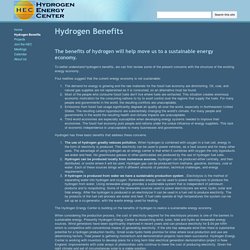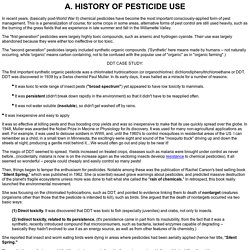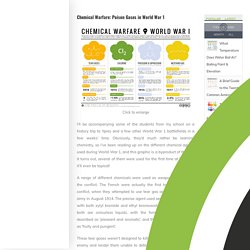

AIDGC: Dangerous Goods Consultants - Hazardous Chemicals & Chemical Storage. Class 2 - Gases Class 2 - Gases, comprises compressed gases, liquefied gases, dissolved gases, refrigerated liquefied gases, mixtures of one or more gases with one or more vapours of substances of other classes, articles charged with a gas and aerosols.

Class 2 is divided into three divisions as follows: Division 2.1 Flammable gases Division 2.2 Non-flammable, non-toxic gasesDivision 2.3 Toxic gases. Parents find their four children unresponsive in their beds after carbon monoxide poisoning. Fire crews ventilating the home. (9NEWS) Four children were rendered unconscious while they slept last night as carbon monoxide seeped through their Adelaide Hills home.

Police were called to the property at Lobethal, east of Adelaide, around 7am this morning after the children, aged between one and seven, couldn’t be roused by their parents. Tests by the Country Fire Service returned readings of carbon monoxide in the home. It is believed a combustion fire in the lounge room was the cause, with police speculating a blocked chimney could have prevented adequate ventilation. Hydrogen Benefits - Hydrogen Energy Center.
To better understand hydrogen’s benefits, we can first review some of the present concerns with the structure of the existing energy economy.

Four realities suggest that the current energy economy is not sustainable: The demand for energy is growing and the raw materials for the fossil fuel economy are diminishing. Oil, coal, and natural gas supplies are not replenished as it is consumed, so an alternative must be found. Most of the people who consume fossil fuels don't live where fuels are extracted. This situation creates enormous economic motivation for the consuming nations to try to exert control over the regions that supply the fuels. Hydrogen has three basic benefits that address these concerns. The use of hydrogen greatly reduces pollution. The Hydrogen Energy Center is building on the benefits of hydrogen to realize a sustainable energy economy. Besides electrolysis the production of hydrogen has been accomplished by a catalytic reaction of waste aluminum.
What Effects Does Propane Have on the Environment? Mississippi River Delta to "Drown" by 2100? June 29, 2009 The Mississippi River Delta is drowning, according to new research that predicts the surrounding coastline will be inevitably reshaped in coming decades.

"There's just not enough sediment to sustain the delta plain," said study author Michael Blum of Louisiana State University in Baton Rouge. Deltas are coastal landmasses created from a river's sediment deposits as the water flows out to sea. Toxicgaslst. Plain English Guide to The Clean Air Act. Toxic air pollutants, or air toxics, are known to cause or are suspected of causing cancer, birth defects, reproduction problems, and other serious illnesses.

Exposure to certain levels of some toxic air pollutants can cause difficulty in breathing, nausea or other illnesses. Exposure to certain toxic pollutants can even cause death. Persistent Bioaccumulative Toxics (PBTs) Pesthist. In recent years, (basically post-World War II) chemical pesticides have become the most important consciously-applied form of pest management.

This is a generalization of course; for some crops in some areas, alternative forms of pest control are still used heavily, such as the burning of the grass fields that we experience in late summer and fall in the Willamette Valley. The "first generation" pesticides were largely highly toxic compounds, such as arsenic and hydrogen cyanide. Their use was largely abandoned because they were either too ineffective or too toxic. The "second generation" pesticides largely included synthetic organic compounds. ('Synthetic' here means made by humans -- not naturally occurring, while 'organic' means carbon containing, not to be confused with the popular use of "organic" as in "organic farming".)
The first important synthetic organic pesticide was a chlorinated hydrocarboon (or organochlorine): dichlorodiphenyltrichloroethane or DDT. . (1) Direct toxicity. Chemical Warfare: Poison Gases in World War 1. Click to enlarge I’ll be accompanying some of the students from my school on a history trip to Ypres and a few other World War 1 battlefields in a few weeks’ time.

Obviously, they’d much rather be learning chemistry, so I’ve been reading up on the different chemical agents used during World War 1, and this graphic is a byproduct of that. Titled. In 1974 scientists published their first scientific hypotheses that chemicals we produced could harm the stratospheric ozone layer.

The ozone layer protects the earth against excessive ultraviolet radiation, which could cause damage and mutations in human, plant, and animal cells. The scientists found that the chlorofluorocarbon gases (CFCs), which were widely used and viewed as posing no harm, could migrate to the stratosphere, remain intact for decades to centuries, and by releasing chlorine, break down the ozone layer. In 1977 the United Nations Environment Programme (UNEP) concluded a World Plan of Action on the Ozone Layer, which called for intensive international research and monitoring of the ozone layer, and in 1981, UNEP’s Governing Council authorized UNEP to draft a global framework convention on stratospheric ozone protection.
During the Protocol negotiations, there was controversy as to whether to base the targets on consumption or production of the chemicals. A. B. C.